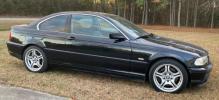This is my second video and I'm learning. It isn't perfect (I need better garage lighting and a better mic) but it's the journey, right?...
Anyway, in this video I'll teach you how to DIY your own Moving Microphone Measurement (MMM) setup to use with an RTA system to EQ your stereo system's response.
Due to the reflective nature of car and home stereos it is often recommended users take multiple RTA measurements of their system in the "head space" (where they sit and listen). To do this you are left with two options: 1) Place the mic at different locations, measure and then average all the results together. However, this can be time-consuming and not very repeatable. 2) Sit in the listening position and hold the microphone in front of you while moving the mic around the head area. This is complicated by your own body's influence (even your hand can change the result). This is especially detrimental if you are trying to use a "target curve".
Therefore, I am providing a low-cost alternative: an oscillating fan to move the microphone. I am definitely not the first person to do something like this and I'm not pretending to be. Also, while not perfect, this solves the above two issues of time and in-accuracy and will be an improvement over the typical methods we use.
Make sure to watch the entire video for some tips on things I learned when building mine. I tried to answer all questions in advance so don't tell on yourself by asking something until you've watched.
- Forum
-
Affiliated Stores

- Amazon
- Walmart
- Sam's Club
- Parts-Express
- Sonic Electronix
- MonoPrice
- The Home Depot
- Lowe's
- Crutchfield
- ebay
- AliExpress
- Best Buy
- Newegg
- Tiger Direct
- Acer
- Advance Auto Parts
- JC Whitney
- Zoro
- Tractor Supply Co
- Bed Bath and Beyond
- Woodcraft
- Bass Pro Shop
- Academy Sports and Outdoors
- Palmetto State Armory
- 5.11 Tactical
- 4-Wheel Parts
- Harry's Shave and Grooming
- Dollar Shave Club
- My Threads






 Reply With Quote
Reply With Quote

